In PowerShell, the Exit function allows you to terminate or stop a script from running. It’s like telling the script to quit or finish up. You can use the Exit keyword to make this happen.
Sometimes, you might want to exit a script before it completes all its tasks. The Exit function comes in handy for this purpose. It can halt the script and stop it from executing further commands.
One common use of the Exit function is to exit a remote PowerShell session. When you’re done working on a remote computer, you can use the Exit cmdlet to terminate the remote session and return to your local machine.
Using PowerShell Exit keyword
The Exit keyword in PowerShell is used to stop the execution of a script, function, or the PowerShell console itself. When executed, it terminates the current scope and can optionally return an exit code to the operating system.
Usage of the Exit Keyword
Exiting a Script
You can use the Exit keyword to terminate the execution of a PowerShell script. This is useful when you need to stop the script under certain conditions, such as when an error occurs or a specific condition is met.
# Example of exiting a script with an optional exit code
if ($errorCondition) {
Write-Host "An error occurred. Exiting the script."
Exit 1 # Exit code 1 indicates an error
}
Write-Host "Script continues..."In the example above, if $errorCondition is $true, the script will terminate, and PowerShell will return an exit code of 1 to the operating system. If $errorCondition is $false, the script will continue executing.
Exiting a Function
You can also use the Exit keyword to stop the execution of a function. However, it will exit the entire script or console, not just the function.
function Test-Exit {
param (
[int]$value
)
if ($value -lt 0) {
Write-Host "Negative value. Exiting."
Exit 1 # Exit code 1 indicates an error
}
Write-Host "Value is $value"
}
# Calling the function
Test-Exit -value -5
Write-Host "This line will not be executed if Exit is called."In the example above, if -value is negative, the Exit keyword will terminate the entire script.
Exiting the PowerShell Console
You can use Exit to close the PowerShell console or terminal window with an optional exit code.
# Exiting the console with an exit code
Exit 0 # Exit code 0 indicates successWhen this command is executed in the console, it will close the console window and return an exit code of 0 to the operating system.
Using Break Keyword
The Break keyword in PowerShell is used to exit a loop prematurely. This keyword is useful when you want to stop iterating through a loop based on a certain condition. Unlike Exit, which terminates the entire script or console, Break only stops the execution of the current loop.
Usage of the Break Keyword
Breaking Out of a For Loop
You can use Break to exit a for loop when a certain condition is met.
for ($i = 0; $i -lt 10; $i++) {
if ($i -eq 5) {
Write-Host "Breaking out of the loop at i = $i"
Break
}
Write-Host "i = $i"
}
Write-Host "This line is outside the loop."In this example, the loop will break when $i equals 5, and the script will continue executing the code after the loop.
Breaking Out of a While Loop
Similarly, you can use Break in a while loop.
$i = 0
while ($i -lt 10) {
if ($i -eq 5) {
Write-Host "Breaking out of the loop at i = $i"
Break
}
Write-Host "i = $i"
$i++
}
Write-Host "This line is outside the loop."The loop will terminate when $i equals 5, and the script will continue with the subsequent lines of code.
Breaking Out of a Foreach Loop
Break can also be used in a foreach loop.
$array = 0..9
foreach ($item in $array) {
if ($item -eq 5) {
Write-Host "Breaking out of the loop at item = $item"
Break
}
Write-Host "item = $item"
}
Write-Host "This line is outside the loop."In this example, the foreach loop will stop executing when $item equals 5.
Practical Example: Breaking Out of Nested Loops
In nested loops, Break will only exit the innermost loop. If you need to break out of multiple levels of loops, you might need to use additional logic.
for ($i = 0; $i -lt 3; $i++) {
for ($j = 0; $j -lt 3; $j++) {
if ($j -eq 1) {
Write-Host "Breaking inner loop at i = $i, j = $j"
Break
}
Write-Host "i = $i, j = $j"
}
}
Write-Host "This line is outside the loops."Using Return Keyword
The return keyword in PowerShell is used to exit a function and optionally return a value to the caller. This is useful for encapsulating logic within functions and providing results or status information back to the code that called the function.
Usage of the Return Keyword
Returning a Value from a Function
You can use return to return a value from a function. This allows the caller to receive and use the result of the function’s execution.
function Get-Square {
param (
[int]$number
)
return $number * $number
}
# Calling the function and storing the result
$result = Get-Square -number 4
Write-Host "The square of 4 is $result"In this example, the Get-Square function calculates the square of the input number and returns it to the caller. The result is then printed to the console.
Returning Multiple Values
In PowerShell, you can return multiple values by returning an array or a hashtable.
function Get-SquareAndCube {
param (
[int]$number
)
$square = $number * $number
$cube = $number * $number * $number
return @{ Square = $square; Cube = $cube }
}
# Calling the function and storing the result
$result = Get-SquareAndCube -number 3
Write-Host "The square of 3 is $($result.Square) and the cube is $($result.Cube)"In this example, the Get-SquareAndCube function returns a hashtable containing both the square and the cube of the input number.
Using Return to Exit a Function Early
You can use return to exit a function early based on a condition.
function Test-Number {
param (
[int]$number
)
if ($number -lt 0) {
Write-Host "Negative number. Exiting the function."
return
}
Write-Host "The number is $number"
}
# Calling the function
Test-Number -number -5
Test-Number -number 10In this example, if the input number is negative, the function exits early without executing the remaining code.
Returning from a Script or a Script Block
You can also use return in a script or a script block to return a value.
# Using return in a script
$result = & {
$a = 5
$b = 10
return $a + $b
}
Write-Host "The result is $result"In this example, a script block calculates the sum of two numbers and returns the result.


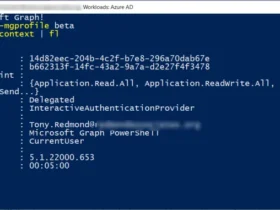
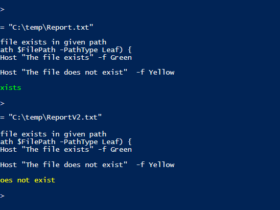
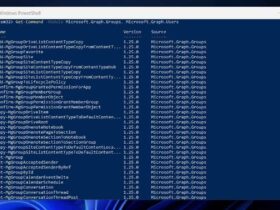
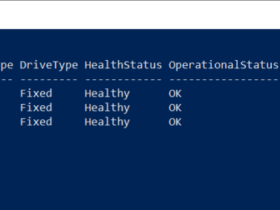
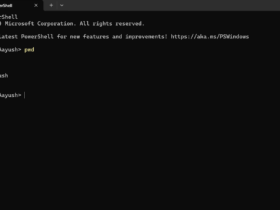
Leave a Reply
View Comments